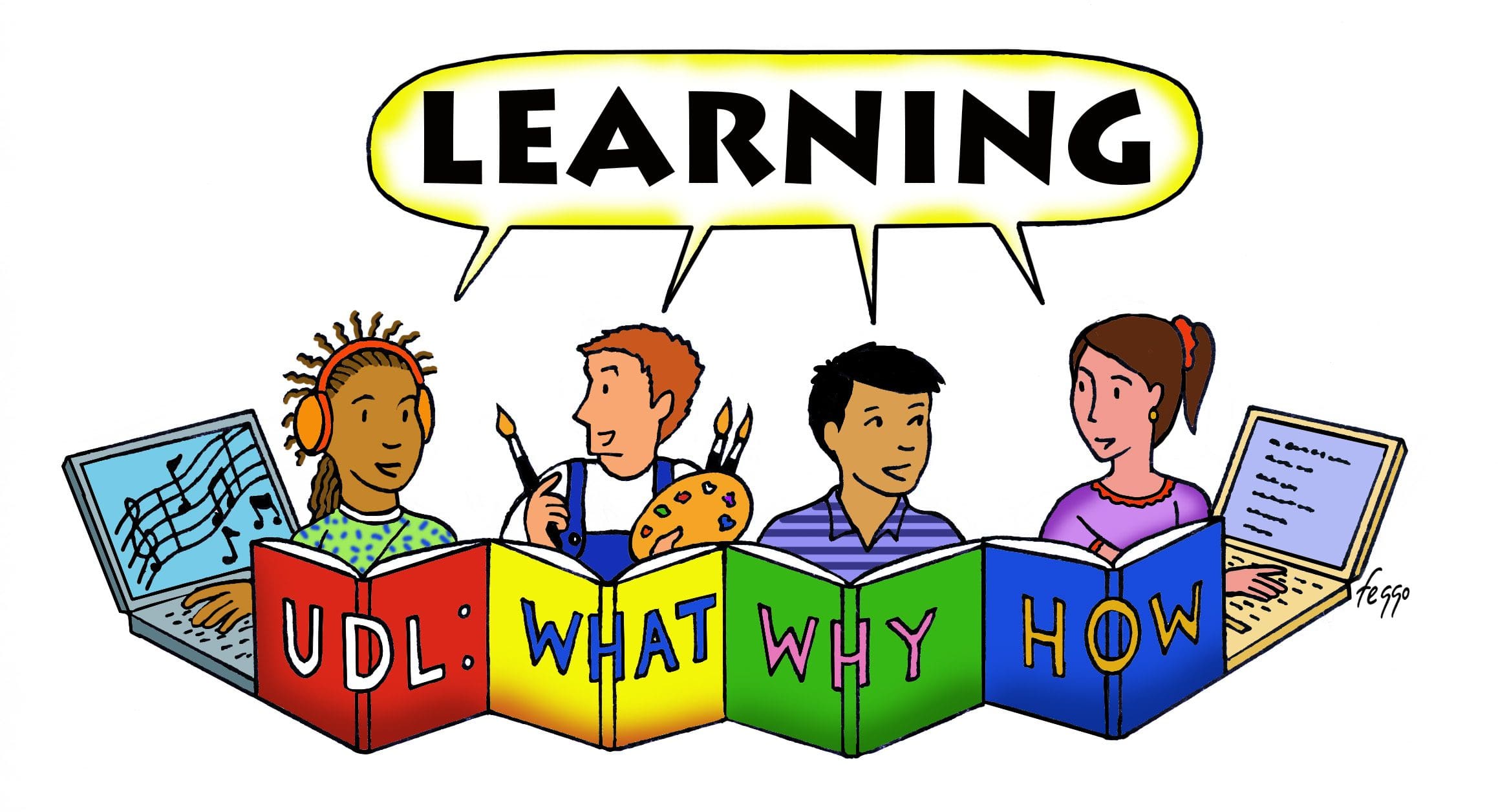Adición de especificaciones de la lista de verificación de UDL
Cree una meta y asegúrese de que todo el contenido apoye la meta.
La actividad está diseñada para apoyar el objetivo. Puedes evaluar el grado de éxito en la consecución de tu objetivo añadiendo algunas comprobaciones. Por ejemplo: Repita el vocabulario teatral durante toda la actividad y, hacia la mitad de ésta, pida a los alumnos que rellenen el espacio en blanco en lugar de darles la palabra. "Necesitamos a alguien más para completar nuestro cuadro congelado, nuestro ___". Al principio de la actividad, puedes introducir una lista de control de "herramientas del actor": voz, cuerpo, imaginación. Después, pregunta a los alumnos: "¿Hemos utilizado la voz? Si es así, cántame un 'ahhh'. ¿Hemos utilizado el cuerpo? Si es así, posad. ¿Hemos utilizado la imaginación? Si es así, dame un pulgar hacia arriba".
Proporcione oportunidades para que los estudiantes se autorregulen, tomen decisiones e incluyan sus intereses.
Antes de la actividad, puedes añadir una lluvia de ideas de opciones en grupo: "¿Cuáles son tus cosas favoritas en un parque?". Después, a lo largo de la actividad, los alumnos pueden elegir cómo quieren participar. Pueden elegir cuándo y qué añadir al retablo; pueden ayudar a dirigir el retablo; o pueden añadir sonidos del público. Puede dirigir varias rondas para que los alumnos elijan qué entornos explorar a continuación.
Cree múltiples puntos de entrada para que todos los estudiantes puedan acceder equitativamente y disfrutar.
Para los alumnos menos verbales o no verbales, puedes eliminar la pregunta verbal "Soy un ___" y poner el énfasis en hacer una pose clara. Si en la clase hay alumnos que hablan, puede convertirse en un divertido juego de adivinanzas. También puedes hacer que los alumnos participen como "directores" para ayudar a que el cuadro sea más claro.
Haz primero, luego reflexiona. Reflexione a lo largo de la lección en lugar de guardarla para el final.
Los alumnos pueden reflexionar de diversas maneras sobre su experiencia durante la actividad. Durante un tiempo muerto, entre rondas o después de la actividad, puedes pedir a los alumnos que compartan cómo se sienten, invitándoles a responder verbalmente, con una pose fija, un movimiento de baile, un dibujo, etc. O puedes pedirles que muestren con su cuerpo poses que les hayan gustado, que hayan hecho ellos o alguien de la clase. También puedes pedir a los alumnos que muestren con su cuerpo posturas que les hayan gustado, que hayan hecho ellos mismos o que haya hecho otra persona de la clase.
Apoye múltiples estilos de aprendizaje presentando y cultivando información usando varias modalidades.
- Visuales: Puede comenzar la actividad haciendo que los estudiantes dibujen su propia versión de un parque. O puede crear un mural de grupo en el que cada estudiante dibuje una parte del parque hasta que haya un parque de grupo grande. También puede venir preparado con imágenes de cosas en un parque en caso de que un estudiante se quede atascado.
- Explicación hablada/oral y respuestas: Explique la actividad como se describe anteriormente. Entrenador lateral y narrar en todo momento.
- Materiales escritos/basados en texto: Si hace una lluvia de ideas en grupo con anticipación, puede anotar y escribir las ideas de las cosas que se encuentran en un parque.
- Tecnología: Si está disponible, puede usar una computadora o tableta para obtener imágenes que acompañen las ideas que los estudiantes generan en su lluvia de ideas, poses y/o cuadros. Incluso podría comenzar la actividad mostrando un video de un “día en la vida” en el parque.
- Oportunidades para que los estudiantes usen sus cuerpos y se muevan: Esto ya está integrado en la actividad. Puede construir a partir del cuadro para incorporar movimiento o crear un movimiento de baile en el parque, que puede culminar en una fiesta de baile en el parque.
- Oportunidades para que los estudiantes participen en experiencias táctiles y/o sensoriales: Puedes traer objetos de un parque (por ejemplo, objetos táctiles como corteza, hierba y piedras; o aceites esenciales con aromas como pino y lavanda). Presenta estos objetos mientras ambientas el parque.
 Intentar
Intentar Intentar
Intentar Recuerda
Recuerda


